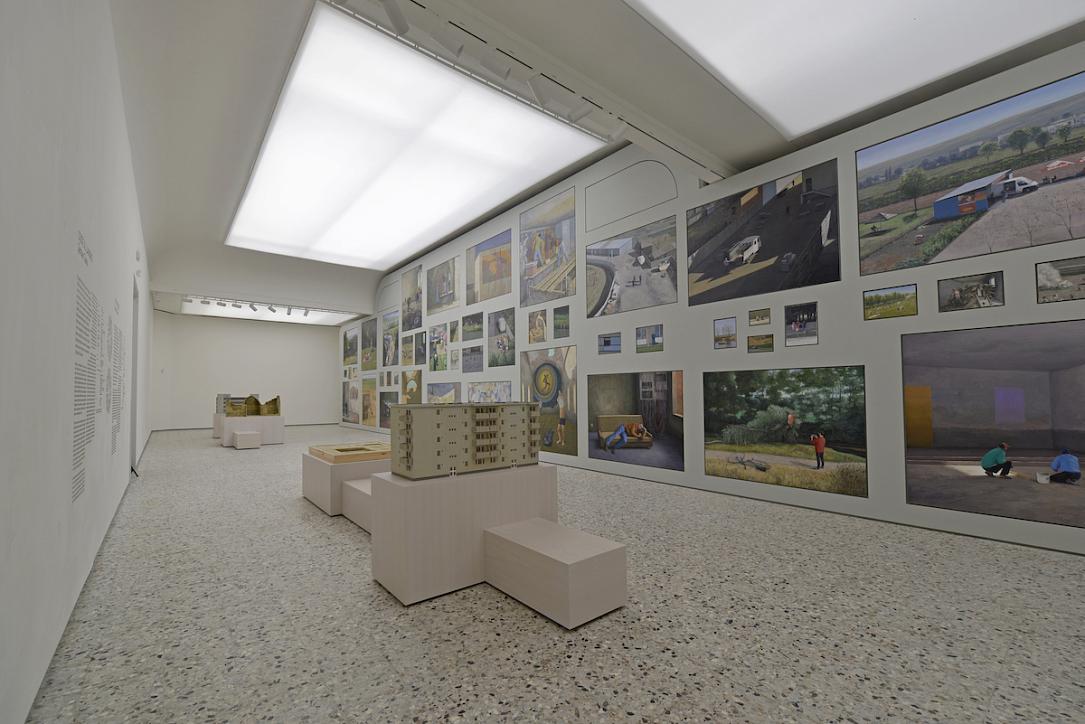Venice Biennale 2024: Romanian pavilion opens with Șerban Savu’s exhibition What Work Is



The Romanian Pavilion at the International Art Exhibition - La Biennale di Venezia 2024 officially opened the exhibition What Work Is by Șerban Savu, curator Ciprian Mureșan. Previously, a component of the same project was unveiled at the New Gallery of the Romanian Institute of Culture and Humanistic Research in Venice, which will consist of creating a large-scale mosaic and a program of public debates.
The exhibition at the Romanian Pavilion in the Giardini della Biennale and the project at the Romanian Institute of Culture and Humanistic Research await visitors between April 20 and November 24.
What Work Is/Ce este munca examines the iconography of labor, drawing inspiration from historical realism and propaganda art from the former Eastern Bloc, the organizers said.
Artist Șerban Savu explained: “Starting from the theme of work and the worker, predilected in realist-socialist art, but moving away from it, the characters in my works are neither heroic nor utopian, they are ordinary people caught between worlds and systems, escaping both propaganda and economic productivity. This suspension between work and leisure outlines an anarchic space, a space of personal freedom, to which I refer through the filter of art history.”
Inside the Romanian Pavilion, arranged in a vast polyptych consisting of 45 paintings, the images' bewildered protagonists and clumsy extras seem engaged in rituals that resemble work and recreation in equal measure. Visitors can sit on the bench in front of the polyptych to admire and interact with the work of Șerban Savu.
“Going from the apartment building where Savu grew up to a ruined church and an archaeological site, the models in that area are decorated with mosaics that move away from the themes usually illustrated in religious contexts or in the cosmogonies of labor in socialist art. Rather than depicting great industrial achievements or mystical apotheosis, the mosaics speak of failure, ambiguity, and perplexity,” reads the press release.
The paintings and mosaics compose a space where visitors are confronted with a questioning of work through its negative definitions: what work is not, what work does not look like, and what work does not mean.
Invited to respond to Șerban Savu's project, the Brussels-based graphic design studio Atelier Brenda (Sophie Keij and Nana Esi) proposes a site-specific intervention on the facade and at the beginning of the exhibition route of the Romanian Pavilion. Their works are a reflection on work, on the working body and their financial quantification, and on the iconographies of counter-propaganda, the same source said.
Complementing the exhibition in the Romanian Pavilion, Savu will open a mosaic workshop at the New Gallery of the Romanian Institute of Culture and Humanistic Research in Venice. During the seven months of the Biennale, pairs of mosaic artists will work in the space located on the ground floor of the Romanian Institute of Culture and Humanistic Research to create a large mosaic, starting from a painting by Savu.
The New Gallery will also host a program of public debates on topics ranging from the history of mosaic art to labor theories from anthropology, contemporary economics and philosophy, ecology, and the post-labor society.
The exhibition at the Romanian Pavilion and the project at the Romanian Institute of Culture and Humanistic Research in Venice can be visited between 11 AM and 7 PM from April 20 to September 30 and between 10 AM and 6 PM from October 1 to November 24.
In accordance with the Biennale schedule, exhibitions are closed on Mondays, with the following exceptions: April 22, June 17, July 22, September 2 and 30, and November 18.
irina.marica@romania-insider.com
(Photo source: the organizers)